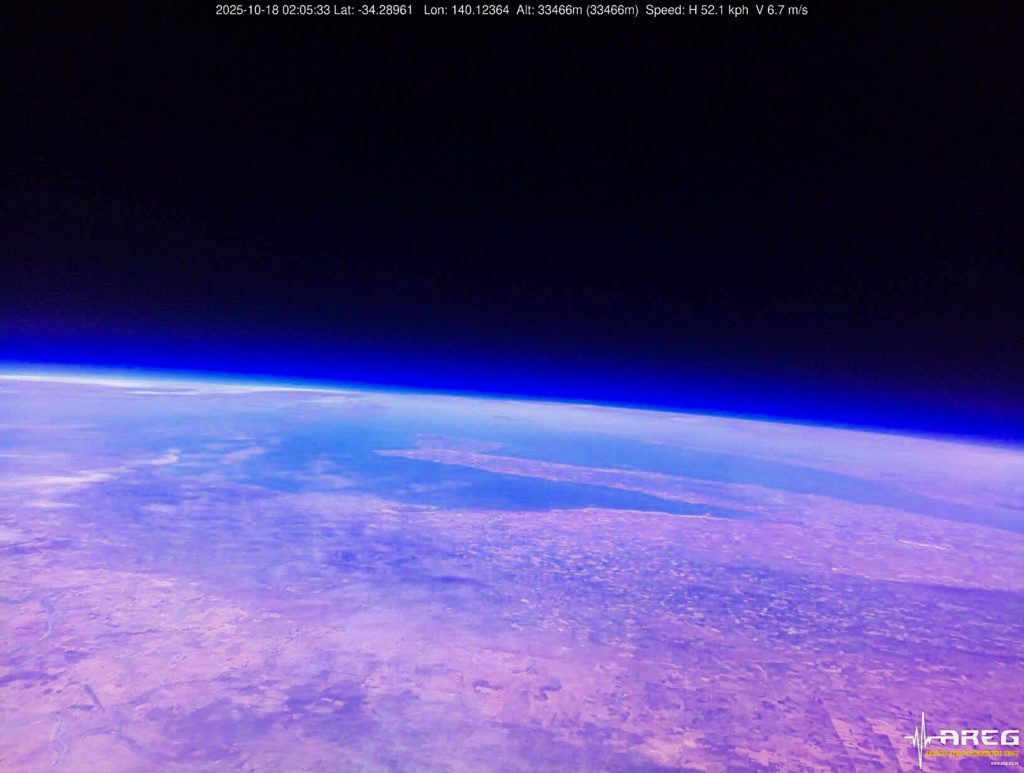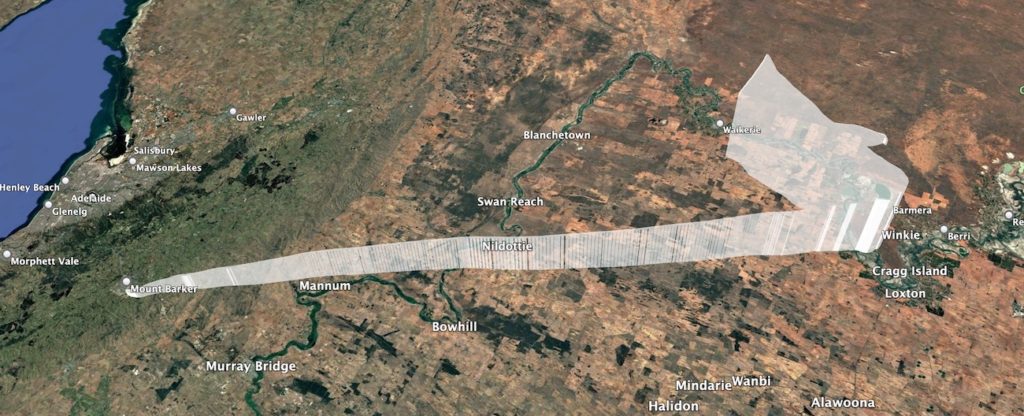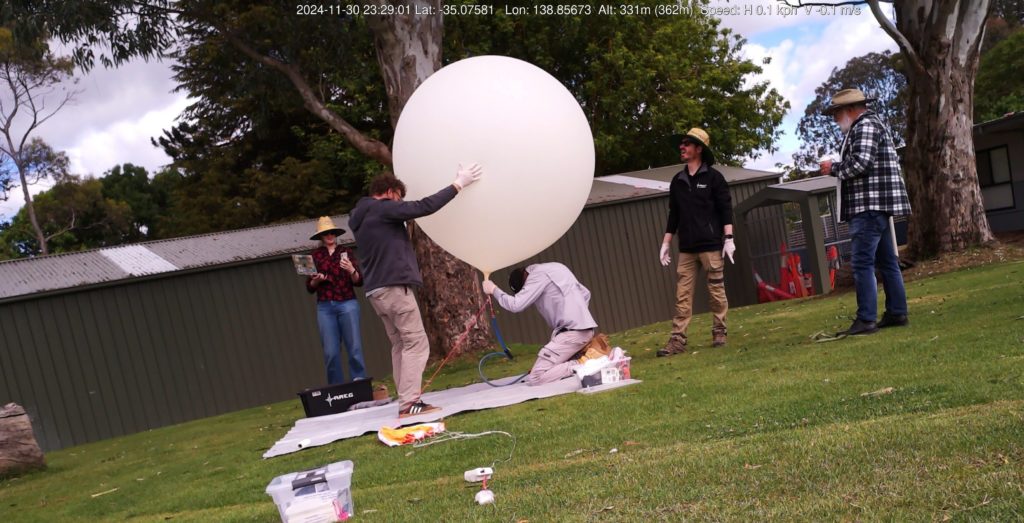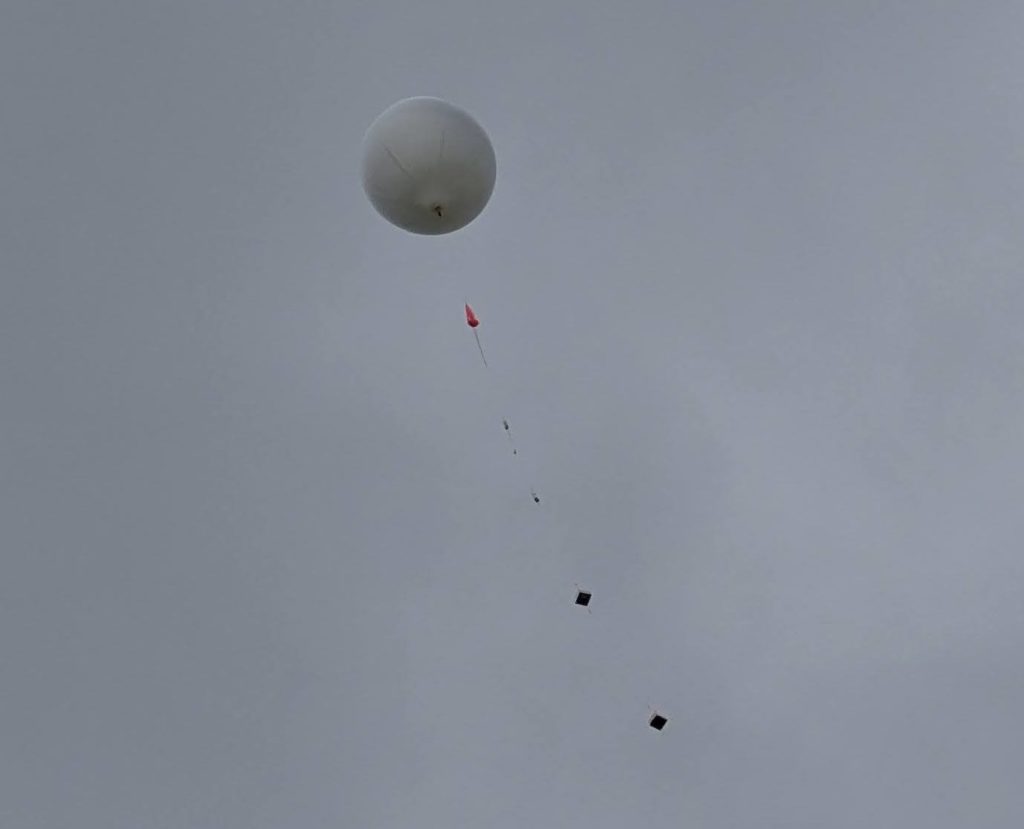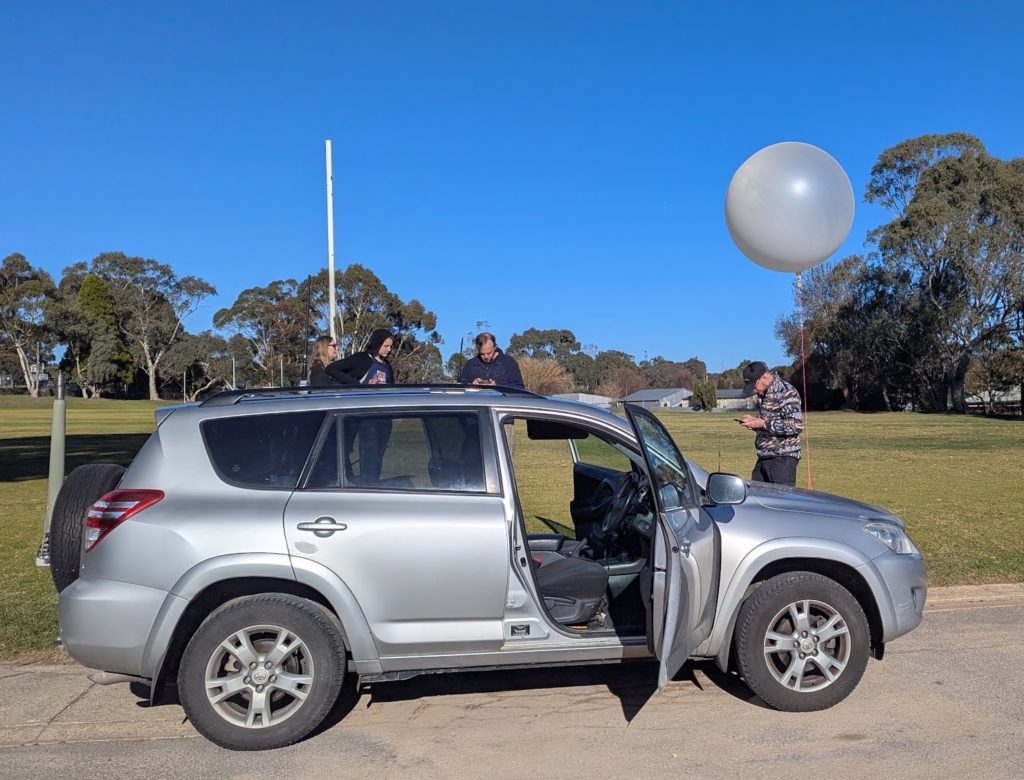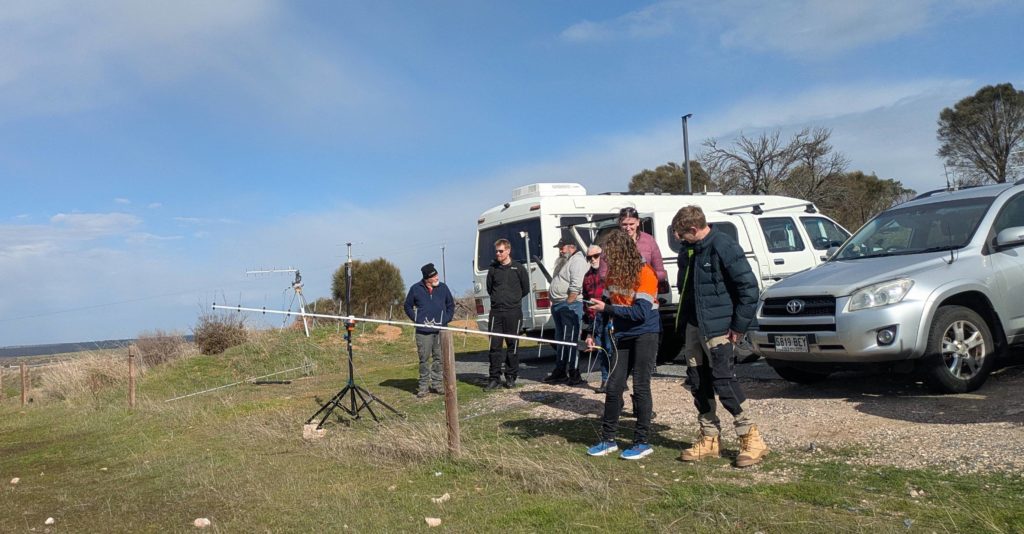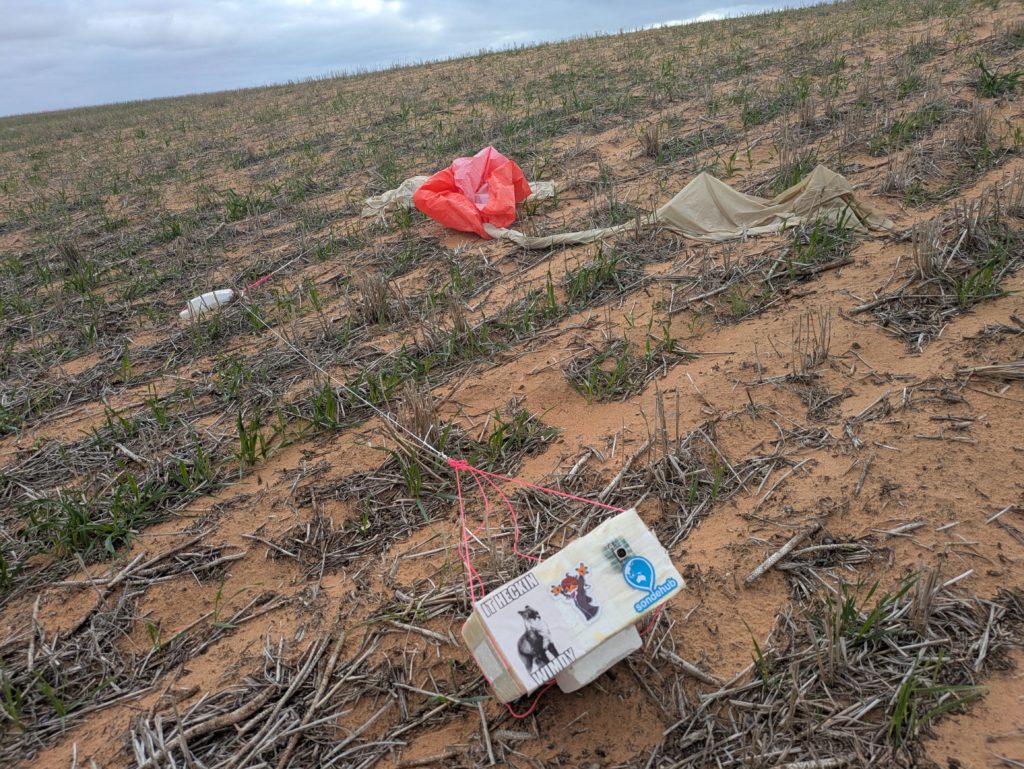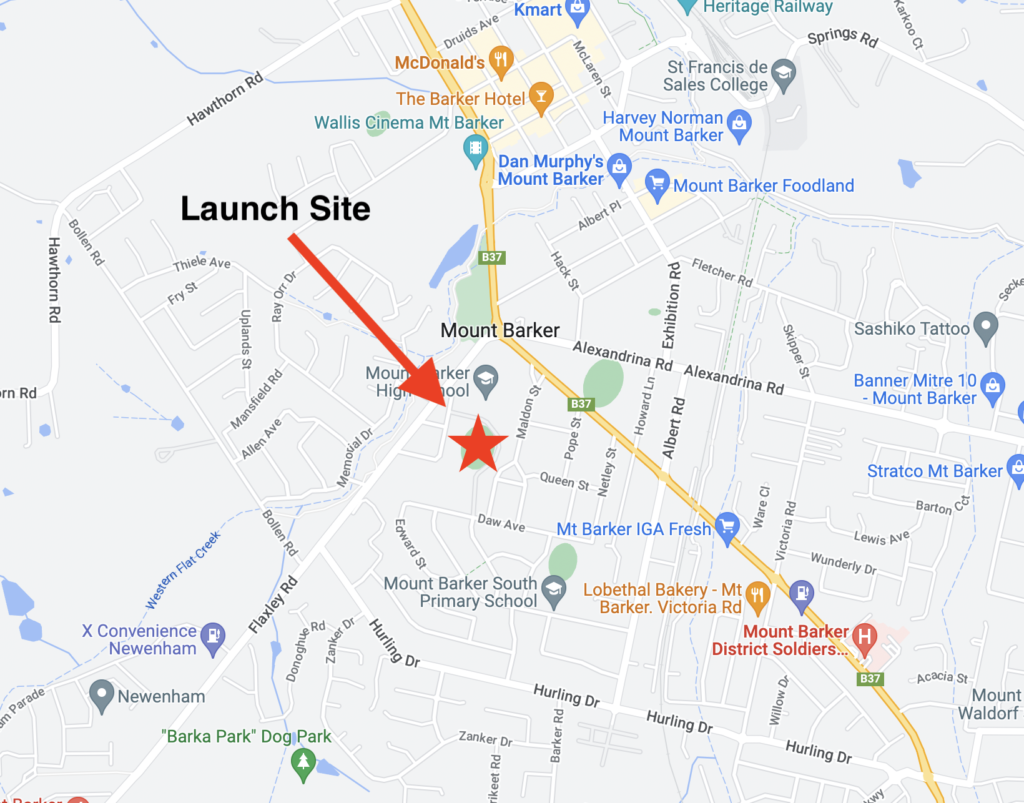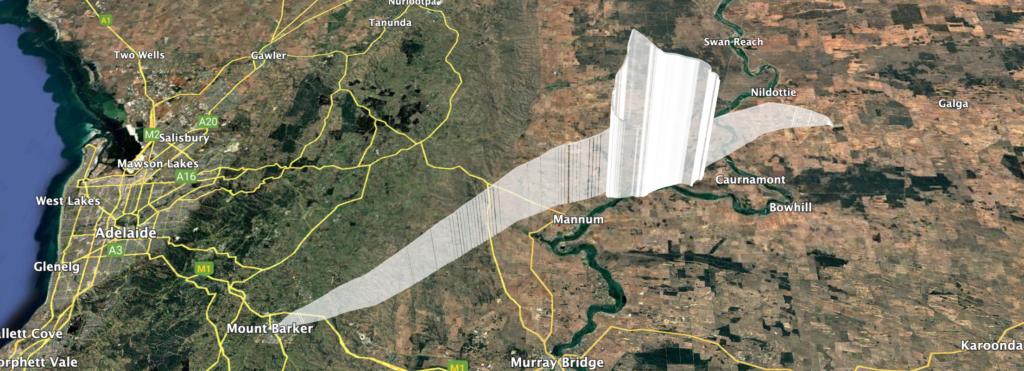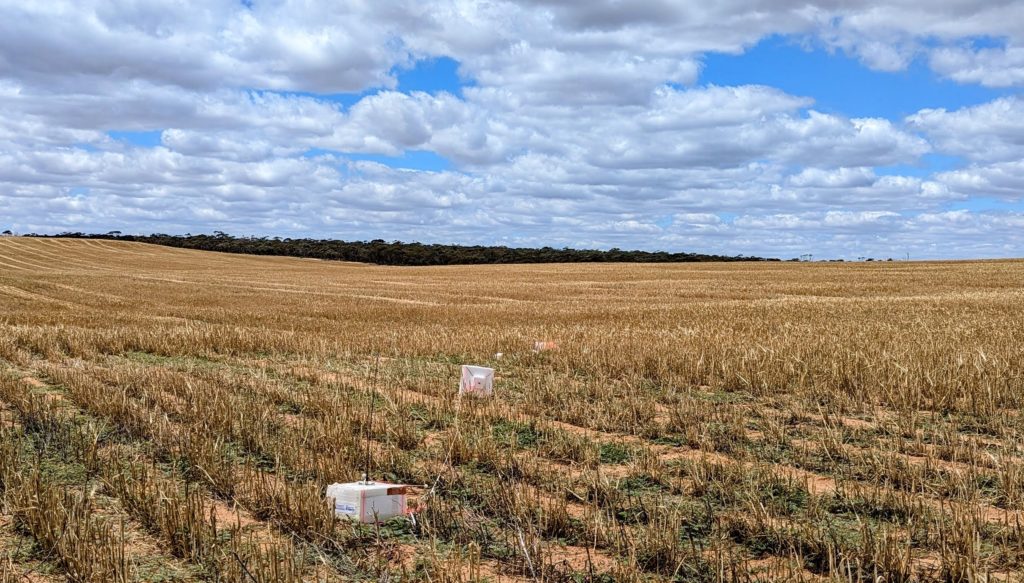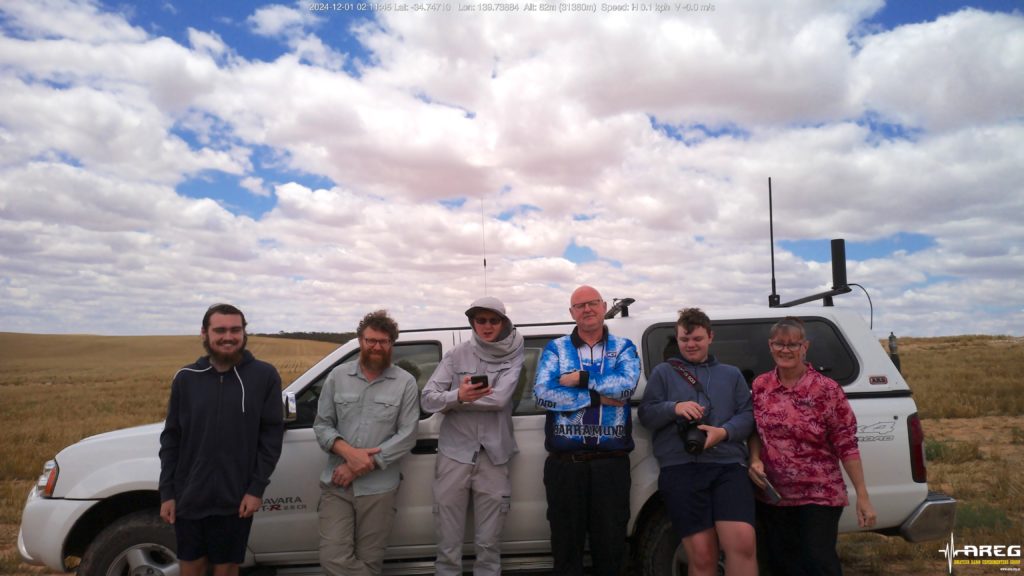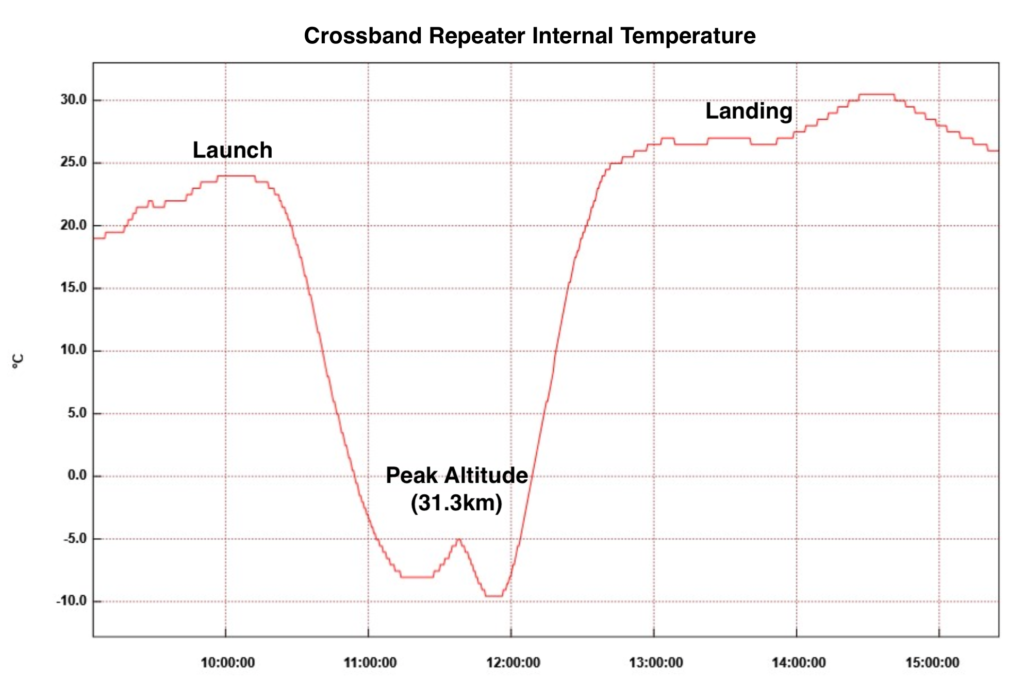UPDATE: Even with the wild weather, we were able to successfully get a launch in the air! Thanks to everyone that helped out with launch, promoting AREG and recovering the payloads. A writeup will be posted at some point. We expect our next launch to be sometime early-mid December.
The next Project Horus launch will be on Sunday the 2nd of November, as part of Fleet Space’s LaunchBox ‘Summit to the Stratosphere‘ STEM event, which is the culmination of this year’s LaunchBox program.
LaunchBox is a reimagining of a STEM program that AREG was a part of back in the 2010s, where we flew student-built payloads on high altitude balloon launches. Fleet Space has re-started the program and expanded it Australia-wide, with hundreds of year 7-8 students involved. Two lucky teams will have their payloads flown on a high-altitude balloon launch into the stratosphere!
This launch will be held at the Mt Barker Summit Sport & Recreation Park, with a launch time expected to be 10AM, though this is very much subject to change on the day. Please note that the launch site will be closed to the public until after the launch time – see below for how you can get involved with the launch through receiving our tracking and imagery payloads!
A full-scale launch will include our regular tracking payloads, a Wenet imagery payload, and 2 of the student payloads. If the weather on the day is poor, we have the following backup options:
- Mid-size launch: Horus Binary tracker + Wenet (similar to Horus 66)
- Small launch: Horus Binary tracker only.
- No launch at all (only if flight path predictions are completely unsuitable)
Which option we go with will depend on the launch site weather on the day.
TRACKING LINKS
- Flight Tracking via SondeHub-Amateur: https://amateur.sondehub.org/#!mt=Mapnik&mz=9&qm=12h&mc=-35.0677,139.23902
- Live Wenet Imagery: https://ssdv.habhub.org/
Details of the frequencies in use on this flight are:
- Primary Horus Binary telemetry on 434.200 MHz
- Backup Horus Binary telemetry on 434.210 MHz
- Wenet v2 Imagery on 443.5 MHz.
On this flight we encourage new listeners to try out our new web-browser-based decoding software for Horus Binary and Wenet – find out more about this further below!
Primary Telemetry – Horus Binary 434.200 MHz – HORUS-V2
 The primary tracking telemetry will be transmitted on 434.200 MHz using the Horus Binary 4FSK data mode. Amateurs in the Adelaide and Central SA region are also encouraged to get involved with the flight through receiving and uploading flight telemetry from our 70cm band tracking beacons. Every piece of telemetry data is valuable to the flight tracking and recovery teams so if you can help join the distributed receiver network to collect that data you will be making an important contribution to the project!
The primary tracking telemetry will be transmitted on 434.200 MHz using the Horus Binary 4FSK data mode. Amateurs in the Adelaide and Central SA region are also encouraged to get involved with the flight through receiving and uploading flight telemetry from our 70cm band tracking beacons. Every piece of telemetry data is valuable to the flight tracking and recovery teams so if you can help join the distributed receiver network to collect that data you will be making an important contribution to the project!
If you try receiving the telemetry from this flight, you’ll need a SSB-capable 70cm receiver (or a SDR), and the Horus-GUI telemetry decoder software. A brief guide on setting this up is available here: https://github.com/projecthorus/horusdemodlib/wiki/1.1-Horus-GUI-Reception-Guide-(Windows-Linux-OSX)
Note that you will need to use a USB ‘dial’ frequency of 434.199 MHz for the 4FSK signal to be centred in your receiver passband and hence be decodable.
Horus Binary telemetry can now also be received using your web browser, using either a SSB receiver or even a RTLSDR!
Click this link to start up a browser-based receiver:
We’ve also got a guide on how to use this here: https://youtu.be/VrgqF7ly-mU
Backup Telemetry – Horus Binary 434.210 MHz – VK5ARG
A backup tracking payload will be transmitting on 434.210 MHz using the Horus Binary 4FSK data mode, and can be received in the same way as the primary tracking payload, with information above. For this payload you will need to use a USB ‘dial’ frequency of 434.209 MHz.
Click this link to start up a browser-based receiver:
Wenet Imagery – 443.500 MHz – USING NEW v2 MODE!
Imagery on this flight will be transmitted via the Wenet downlink system, which uses 96 kbit/s Frequency-Shift-Keying to send HD snapshots. Reception of the Wenet imagery requires a RTLSDR, and a 70cm antenna with some gain (a 5-element Yagi is usually enough).
We will be using the new ‘Wenet v2’ mode, as used successfully on Horus 64B and Horus 66. There is information on updating existing Wenet receive setups available here.
Wenet can now be received on almost any modern computer, and even some newer android devices, using the new WebWenet software! This operates entirely within a web browser. Information on how to get setup to use this is available here: https://www.youtube.com/watch?v=Euo4BGB6wUU
Click this link to start up a browser-based receiver:
Wenet Web Receiver – 443.5 MHz
We encourage new listeners to try out the WebWenet software for decoding signals on this flight – however you can also still receive the signal using the Linux-based decoder, with details on this available here:
https://github.com/projecthorus/wenet/wiki/Wenet-RX-Instructions-(Linux-using-Docker)
During the flight, the live imagery will be available at this link: http://ssdv.habhub.org/

